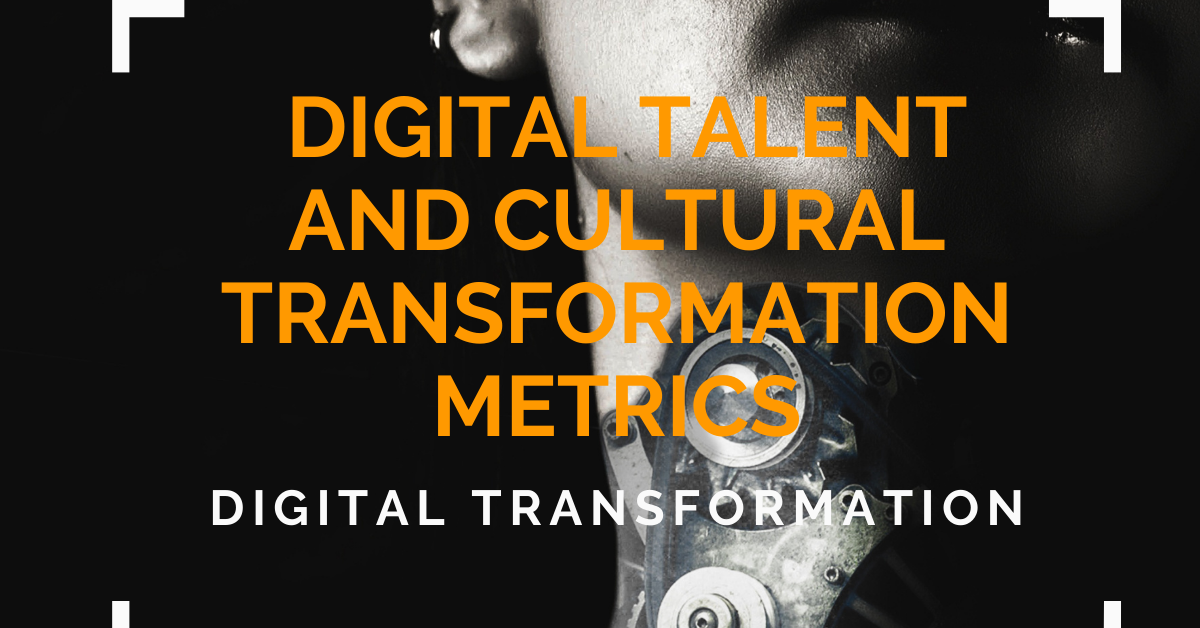“Your RPA | Intelligent Automation project will almost certainly fail if you don’t mitigate against these risks right now” – Part 2 of 6
The success of any process Robotic Process Automation or Intelligent Automation Program depends on the identifying the inherent risks in your digital transformation program early and eliminating or mitigating them. Part 1 looked at strategic and implementation partner risks; today we consider tooling selection, testing and stakeholder buy-in risks.
Tooling selection and testing risk:
The technology landscape is very complex. Over the past 5 years there has been a great deal of hype in the automation market in particular. There has been a great deal of noise around: the right tool or tools to use; whether a tool is cognitive or not; deciding if analysts reports are a fair reflection of the market or a bias selection paid for by automation vendors themselves; worries over investing in a provider who may get acquired or exit the market; confusion over terminology leading to confusion over the features a platform does or does not have; whether to take vendor sales staff advice at face value when many simply don’t understand robots in the real world; etc.
“The vendor sales team will tell you how great it all is, and it usually is but there are other factors that affect that platform’s initial success. Make sure you do a pilot (not a POC, they are often too simplistic) and keep the vendor on the hook for the success of that Pilot with you. Yes, it will cost you more in having some Services fees, but failure costs a lot.
Make sure you don’t boil the ocean on the Pilot but that it also can be delivered in production and produce an ROI. Consider also that different platforms suit different types of teams and skills. All the major ones are good and the feature differentiation between them is getting less and less, so in the end it will be all about the ROI and how fast you can achieve it.”
Simon Frank , RPA Lead
RPA is a fantastic tool but it can be complex and expensive. Whatever your vendor tells you, implementing RPA correctly takes considerable time and money.
“The tools are amazing, technology at the heart of transformation at its best, up to date and growing at a pace where business and people can not keep up with. This also adds to the complex pricing models, be it internal with IT Wooden Dollar $$ which affects the cost of all deliveries to business verticals. Vendor sales people will sell you snow, yet will watch it melt away unless you have scrutinised the solution in your business, your IT domains if not then keep buying water. Have more than 1 solution, then the CoE can then utilise the best for the task at hand, relying on one Vendor is limiting yourself to one tool in the box, and it won’t be an adjustable spanner but an 18mm rusted spanner.”
Graham Lee , Automation Jedi, Guru and all round good guy
An automation program, within an enterprise of reasonable scale, may cost $250k in the first 6 months alone (e.g. software, consultancy, robotics lead, cloud architecture, process mapping software, coders, analysts, etc.). Therefore, selecting a Robotic Process Automation tool or platform should not be a quick decision.
“Realise that your selection criteria in the beginning will be different compared with when you are one or two years in. RPA is mature but IA is far from it, so maintain a flexible approach and consider having more than one tool for different scenarios. Be careful of making license price only decisions.
Many organisations state that the license cost is only 20-25% of the overall Cost of Ownership. The maturity of your own RPA organisation will enable you to focus on such things as reducing license costs down the line. When starting out, cost of failure is one of your biggest risks, so budget for assistance to enable you in a best practise way over a period of time. It is not sensible to think that you do the online training, get certified and you are fully capable.”
Simon Frank , RPA Lead
Building the right foundations for a digital transformation program is essential to delivering multi-million pounds of long-term business success (i.e. significant investment returns from the automation of processes).
1. Selecting the wrong tool. There are a wide variety of automation platforms and digital tools to support transform your organisation. But not every tool will work in your specific organisation. It is imperative to test the tools in your environment during a proof of concept stage before you commit to buying them.
2. Buying a tool that does not work with Citrix but Citrix is a key platform within your business operations. Lots of organisations offshore or have staff working remotely. Citrix is often used. And whilst Citrix is a fantastic platform (other tools are also available) not every technology is compatible with it. Check.
3. Relying solely on analyst reports to select a product when many an analyst has never built a bot nor do the reports select the whole market. Use the right analyst report.
4. Implementing robots that are not quite ready to go live can result in serious business problems and a loss of faith in an automation program.
5. Buying a tool based on vendor promises not on rigorous testing in an organisations production environment.
6. Development and live environments don’t match
“If you are going to do it properly, have development, test and production Automation environments and ensure you have similar for the applications you are automating/integrating with. Also consider having a sandbox/lab which can be a bring up tear down, experimental, safe space which is also great for testing new versions in.
So many times, projects can take much longer because there is only a development environment for the apps you are automating – which don’t have good data for UAT – and production – which is nigh on impossible to UAT in effectively on and is inherently dangerous to do there anyway. If you are running on-premise type RPA environments (even if private cloud hosted) ensure test and production are exactly the same. For example if your Prod’ is clustered and Test is not, it is just not possible to test every scenario or diagnose a production fault.”
Simon Frank , RPA Lead
7. Interpreting Agile as get anything out fast no matter the cost. Great code is tested and only put into production when it is ready. This does not mean that every feature and exception must be considered day one, as delivering in waves of value is recommended, but this does mean completing proper testing on code before it goes into production (e.g. unit testing, paired testing, stress testing, end to end testing etc.).
- 40 essential criteria to choose an automation platform: https://lnkd.in/gR3GPXA
“There is no one size fits all with automation. Build a portfolio of RPA, AI, Orchestration, Integration and ML tools. Then you will have a need and a range of tool to test, not a tool to meet all needs.”
Janine Gill, Director Intelligent Automation
Stakeholder buy in risk:
Robotic Process Automation, Intelligent Automation and Data Analytics initiatives all require stakeholder buy in. It is key to both understand; the stakeholders who will have the most influence on your #RPA project (e.g. executive sponsor and executive team; customers; employees; the board; unions; CISO, IT, risk and compliance teams; etc.) and, the stakeholders who will be most affected by your project (e.g. internal staff impacted positively or negatively by RPA such as finance, HR, supply chain, call centre management staff, etc.).
1. Forgot to obtain stakeholder buy in or consider all relevant stakeholders:
By completing a stakeholder matrix or mapping exercise you will see:
- Who has a financial stake/interest in your project.
- Who has an emotional interest (don’t underestimate this; if this project was someone’s “baby,” keeping them happy and in the loop is critical).
- What are the top motivations for each stakeholder.
- Who are the biggest supporters.
- Who might be the biggest non-supporters or naysayers e.g. technophobes or business units who may lose their jobs and therefore, status due to your intelligent automation program.
and how best you might target and influence the various groups you have identified.
2. Engage the union. Unions are there to protect their members interests and welfare. Any program that fails to engage a union will result in failure. Spend time talking to a union evidencing how automation positively impacts roles (e.g. reduces strain from monotonous, repetitive tasks, etc). and improves work life balance will be welcomed.
“Use your stakeholders to define the use case early on. Get them involved in the discovery and design so they understand the need fully. Then demonstrate the value automation can bring.”
Janine Gill, Director Intelligent Automation
“The key stakeholder in any migration and cost savings is the CFO and the team, if they can not support your ROI then stop until its has been agreed. You will have constant challenges with ROI and FTE savings, this is not new, so suck it up and accept it. It comes with RPA Programmes of delivery.
Large companies who have grown and have employees for the same length of time will not support you well enough to grab traction. Culture will eat your innovation for breakfast dinner and tea. Outside partners and influence will not succeed, leadership responsibility and accountability are key drivers to succeed.
Biggest mistake companies can make is to rely on external consultancy companies who will provide smoke and mirror POC, if its not POV and be able to be reused then walk away. If your consultant has gravitas then ask for their CV on delivery, not just in leadership, but understands the issues and will show you the medals and wounds of the journey, far too many Walter Mitty’s in the RPA Space, from Seniors to Junior Devs, don’t be afraid to ask for credentials..”
Graham Lee , Automation Jedi, Guru and all round good guy
3. Not engaging stakeholders in the roll out or planning
“Try to involve user at the right intervals, it’s good to have short demos at regular intervals for constant user feedback which will minimize the risk of failure.”
Manish Rawat, Intelligent Automation Technical Manager
- Robotic Process Automation and Intelligent Automation will not sell itself – you have to do it.
- ✔ Part 1: Before you begin – https://lnkd.in/gyGkdTM
- ✔ Part 2: Understanding business Strategy – https://lnkd.in/gzG6Usq
- ✔Part 3: Proof of Concept – https://lnkd.in/gJDJp-K
- ✔ Part 4: Scaling and communicating – https://lnkd.in/gVnAqGC
There are inherent risks in any sizeable technology, transformation or business program. Organisations need to accept and plan for risks so that they can avoid or mitigate them.
Let me know your thoughts in the comments below 👇
My Expertise: I’m an intelligent automation, data analytics, robotic process automation and digital transformation expert. For the past 25+ years I have been driving business transformation across a range of industries using; common sense, digital technologies, intelligent automation, data analytics, artificial intelligence and robotics process automation. This has generated millions of dollars of value. I solve complicated problems others can’t. I am happy to help advise you to support solve your unique business challenges.
If you enjoyed this article then you may enjoy these 11 articles too.
- RPA and IA wont sell itself; you have to do it – Author – 4 part series
- Building an Automation Centre of Expertise | An Experts Guide – 5 part series
- If your RPA program is not making money then it has failed.
- RPA – Proof of Concept (POC) or Proof of Value (POV)? Who cares, just get going!
- 40 Essential Selection Criteria to Choose an RPA Platform – 5 part series
- I meet 150+ developers and these are 20 signs of a truly gifted developer
- The A-Z of Robotic Process Automation, Intelligent Automation and Digital Transformation
- How to scale successfully – you have 60 seconds to reply
- Can organizations implement RPA without having a digital transformation strategy – what would you have said?
- FREE training sites for Robotic Process Automation, Intelligent Automation, Data Analytics, Artificial Intelligence & Digital Training Sites
- 22 way to cut the cost of an automation program – 4 part series
If this could benefit someone else tag them and share this.
Free to reuse: We are a community of RPA, analytics, digital and intelligent automation experts with years of real world experience. We have stories to tell and the scars to show for it. We share our collective wisdom for free to simply provide as much value as we can to you. Therefore, if you want to post this article on your LinkedIn page then please feel free to do so. The more information we share within the RPA community the more likely businesses are to succeed with this excellent technology.
Further Help: If I can help you in any way please do reach out.
Note: The views expressed above are our views and not those of my employer or the employers of the contributing expert





Leave a Reply